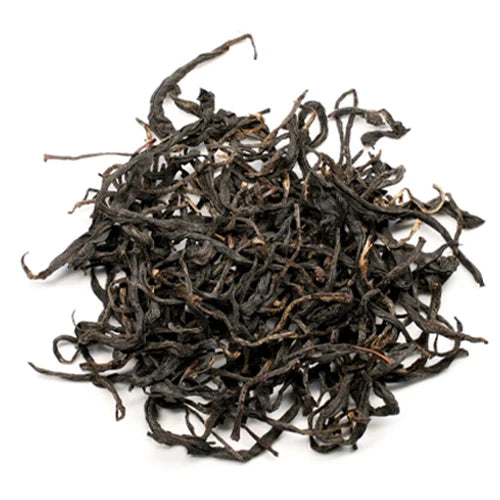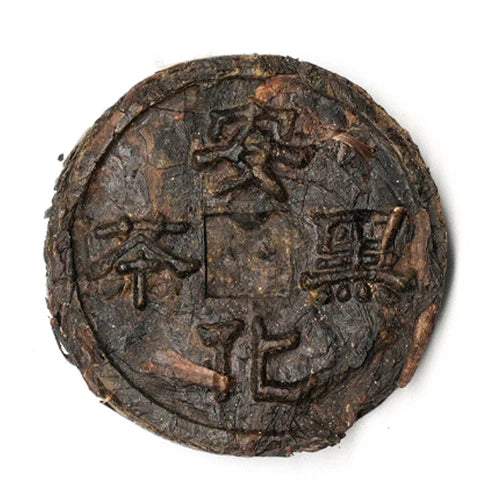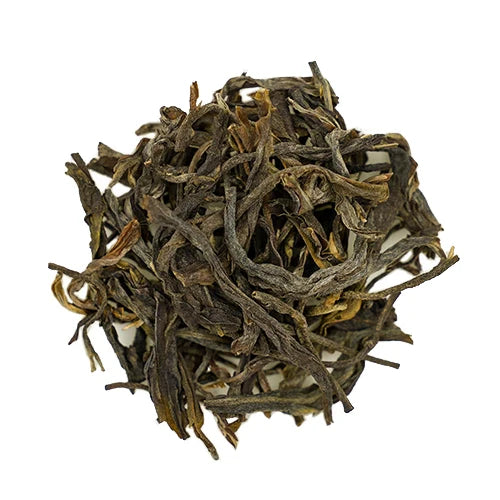I believe that those who are familiar with Chinese tea have heard of or know about Tie Guanyin tea to some extent. When people first encounter Tie Guanyin, some may mistakenly think it is a type of green tea. In reality, Tie Guanyin is a classic oolong tea. The name Tie Guanyin originally referred to the tea tree variety, and because it is suitable for making oolong tea, the finished oolong tea product from leaves of Tie Guanyin trees is also named Tie Guanyin. So-called Tie Guanyin tea is the oolong tea made from the Tie Guanyin tea tree variety.
Why is Tie Guanyin often mistaken for green tea?

Tie Guanyin can be categorized into three main types: Qingxiang (Fresh aroma) Tie Guanyin, Nongxiang (strong aroma) Tie Guanyin, and Chenxiang (aged aroma) Tie Guanyin.
Qingxiang Tie Guanyin has a relatively mild taste with a slight sweetness on the tip of the tongue, leaning towards modern processing techniques. Its appearance is characterized by a jade green color, clear infusion, rich aroma, and distinct floral notes, resulting in a smooth and authentic taste.
Nongxiang Tie Guanyin, on the other hand, is known for its robust flavor, high and lasting aroma, and a more pronounced sweet aftertaste. It is produced using traditional roasting methods after the initial processing. Nongxiang Tie Guanyin has a golden-hued liquor and a pure aroma, offering a thick and rich taste. Compared to Qing Xiang, Nong Xiang Tie Guanyin is warmer in nature and is believed to have additional benefits like thirst-quenching and digestive support.
Chenxiang Tie Guanyin, also known as aged or matured tea, is produced by storing Qingxiang or Nongxiang Tie Guanyin for an extended period and subjecting it to repeated processing. This category of Tie Guanyin has a deeper color, ranging from reddish-brown to dark red, a rich infusion, a sweet and mellow taste, and a lingering aroma. Its characteristics and taste are similar to Pu-erh tea, black tea, and other teas with a rich historical and cultural heritage.
Qingxiang Tie Guanyin is the most common type found in the market, and what most people encounter is typically the Qingxiang Tie Guanyin. The greenish liquor and green leaf appearance after brewing can indeed resemble green tea, which is why many people mistake Tie Guanyin for green tea. If you come across the golden-hued liquor of Nongxiang Tie Guanyin or the reddish-brown liquor of Chenxiang Tie Guanyin, it is less likely to be confused with green tea.
The core processing techniques of Tie Guanyin determine its classification as oolong tea.

Of course, it is not appropriate to judge a tea's category based solely on its appearance and color. The reason Tie Guanyin is classified as oolong tea lies in its tea-making process.
The primary steps in making Tie Guanyin include Weidiao(withering), Yaoqing(shaking the leaves), Shaqing(killing the green), Rounian(rolling), and drying. The most crucial step in this process is Yaoqing which also means "shaking the leaves." This step involves alternately shaking and spreading the leaves, and it is the key procedure that imparts the unique qualities of Tie Guanyin. "Shaking" is a dynamic process where fresh leaves collide, scatter, and rub against each other in a shaking drum. "Spreading" is a static process where the leaves are spread out in a bamboo sieve, allowing moisture to penetrate and various chemical changes to occur. Shaking the leaves facilitates the transport of moisture from the stems to the leaf surface, promoting leaf rejuvenation, while spreading helps disperse moisture from the leaf edges, resulting in withering and softening. In essence, shaking is for rejuvenation, while spreading is for withering. Shaking and spreading are typically carried out 3-4 times, with alternating leaf rejuvenation and withering. As shaking frequency increases, moisture decreases, the transformation accelerates, the greenness fades, and the floral aroma intensifies, gradually transitioning the leaf color from yellow-green to light red and even silver-red, forming the characteristic "green leaves with a red edge."
Yaoqing is a unique processing technique in oolong tea production. This core process of Tie Guanyin is what categorizes it as oolong tea. By comparison, green tea processing primarily involves three steps: Shaqing(killing the green), Rounian(rolling), and drying. A quick glance at the two processes of oolong tea and green tea makes it clear that Tie Guanyin cannot be considered green tea.
The defining feature of Tie Guanyin as an oolong tea: The pronounced aroma

Oolong tea is renowned for its unique aroma, especially in the case of high-quality loose leaf oolong teas that exhibit a variety of rich aromas worth exploring.
The core tea-making process in oolong tea, Yaoqing(shaking the leaves), endows oolong tea with an exceptionally prominent aroma. During this process, the collision and agitation of fresh leaves cause some cellular damage on the leaf edges, promoting the oxidation of polyphenolic compounds and the formation of colored substances, as well as encouraging the development of aromatic compounds. When Yaoqing(shaking the leaves) is done effectively, the entire process results in a sequence of aroma changes: leafy aroma, light floral aroma, floral aroma, light fruity aroma, fruity aroma, and ripe fruit aroma. This leads to the lush aromatic characteristics of oolong tea.
High-quality Tie Guanyin tea is known for its fresh and fragrant aroma that fills the room when the tea is brewed. It is often said to have a "lasting aroma even after seven infusions." Research conducted both domestically and internationally has shown that Tie Guanyin from Anxi, in particular, contains the most diverse range of aromatic compounds, with a significantly higher proportion of low and medium boiling point aromatic components compared to oolong teas made from other tea tree varieties. This unique aroma of Anxi Tie Guanyin is captivating and makes for a delightful tea-drinking experience. iTeaworld offers Qingxiang Tie Guanyin from the core tea-producing region of Anxi, available for worldwide delivery, allowing you to savor the authentic flavor of Tie Guanyin.
I hope this article helps clarify a common misconception about Tie Guanyin and provides a better understanding of this long-standing and aromatic oolong tea.











































































